I struggled to get into Street Fighter V. When Capcom released the initial game in 2016, it had solid graphics and gameplay, but felt hollow. It launched with only 16 characters and lacked an arcade mode—a bizarre decision for a series that built its fame on arcade sales. Further, its bare-bones game options, online connection issues, and miserly digital currency practices (i.e., fight money) certainly didn’t help.
Despite my love for Street Fighter IV and the series as a whole, I didn’t get into Street Fighter V until Capcom released Street Fighter V: Arcade Edition in 2018. The game had certainly improved by then. It had 28 characters and an arcade mode, online gameplay was smoother, and it had a story mode, even if it was a poor attempt at imitating Mortal Kombat 9‘s structure. The developers even become more generous with fight money. The game finally felt complete.
Still, the core gameplay, while polished, just felt off to me. As Street Fighter V continued to receive new characters and stages, culminating in a final major update in 2022 by way of Street Fighter V: Champion Edition, I had already lost interest in the game and started looking ahead to the next iteration.
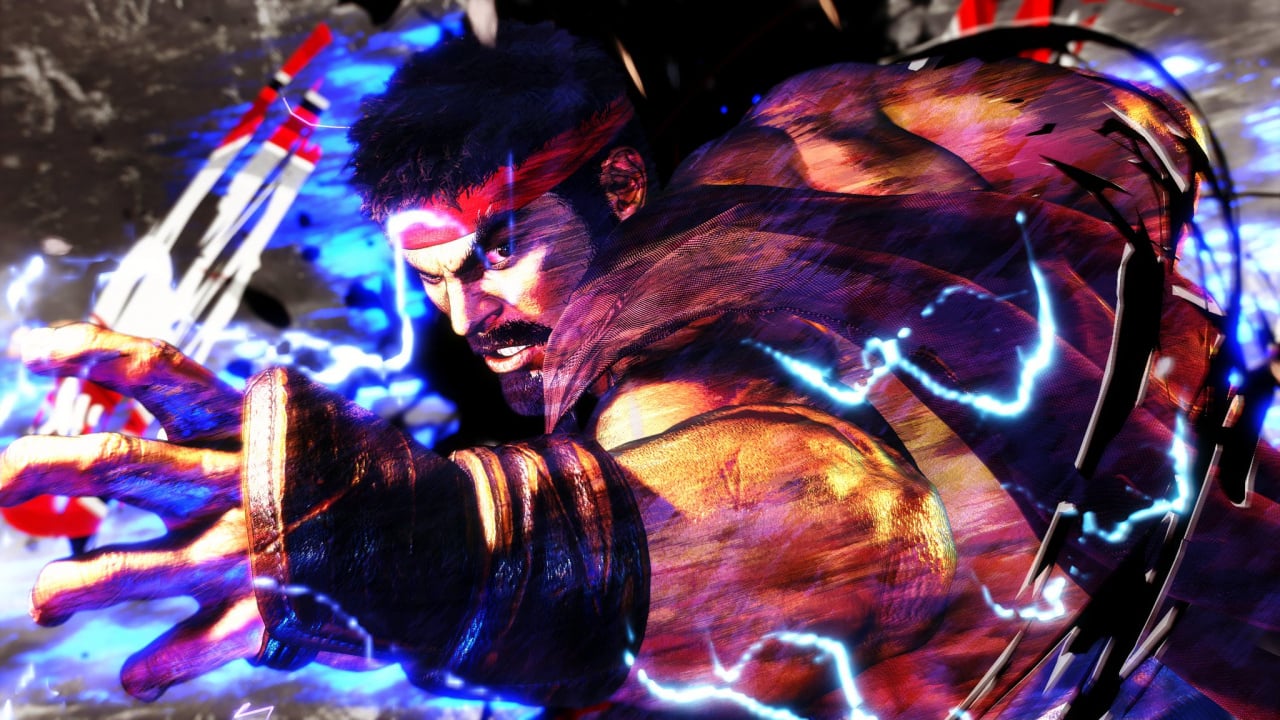
A New Contender
With Street Fighter 6, Capcom has listened to feedback and poured so much love and care into the game that it excels in just about every area its predecessor failed. It presents an ambitious, innovative vision for the series and fighting games in general, though that experience is occasionally hampered by the scope of its own ambition.
Street Fighter 6 celebrates Street Fighter, Final Fight, and several other popular Capcom series. It’s an ambitious, stylish game with a solid multiplayer experience and innovative (yet imperfect) single-player offerings that could shape the future of storytelling in fighting games.

Street Fighter 6′s Drive System, Explained
Street Fighter’s core gameplay has evolved with the implementation of SF6′s new Drive Gauge system. This system offers players a balanced risk/reward system that encourages aggressive gameplay.
Your Drive Gauge recovers quickly when you move forward and attack while draining your opponents’ gauge if they block your attacks. If you’re too aggressive, however, you’ll use up the entire gauge and enter a burnout state where you lose recovery frames on your moves and are more vulnerable to being stunned. This also sets you up to take chip damage.
Unlike in previous entries, the Drive Gauge gives immediate access to enhanced special moves, now called Overdrive Arts instead of EX moves. Each Overdrive Art takes up two stocks.
Each character also has their own Drive Impact, which, in exchange for one Drive Gauge stock, lets you throw out a powerful attack that can absorb two hits before breaking. The force of the impact shoves your opponent across the stage and is especially useful if your opponent blocks it in a corner. It’ll slam them into the corner, breaking their guard and opening them up to your attacks. However, some characters’ special moves can bust through the absorption.
Drive Parry lets you absorb attacks. For each attack you absorb, you restore part of your Drive Gauge. If you hit the parry right before an attack hits you, you can initiate a Perfect Parry, which slows time and gives you more of an opening to interrupt your opponent’s offense. But if you parry and no attack comes, you lose some of your stock.
Drive Rush is an excellent combo extender, allowing you to dash out of the parry state or after you throw special cancelable moves. This dash propels you forward; with this momentum, you change the properties of your next attack. If you dash after you parry, you use one stock, but if you dash after a special cancelable move, it cost three stocks.
Drive Reversal, which you use while blocking, lets you cause a little recoverable damage and push enemies back if they’re constantly pressuring you. It can be particularly useful if you find yourself stuck in a corner.
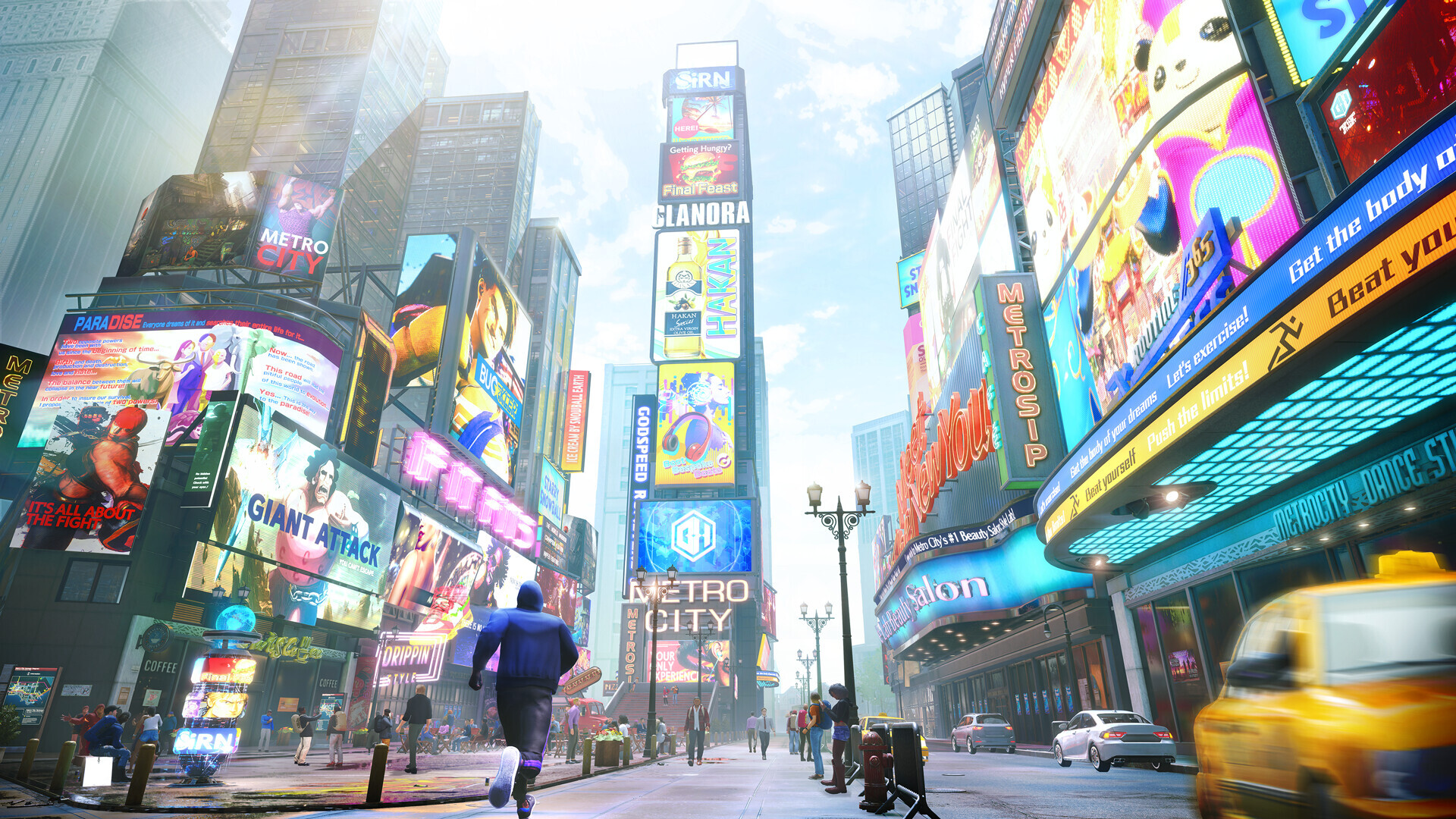
I Heart MC
Street Fighter 6 offers three main modes: World Tour, Battle Hub, and Fighting Ground. The game’s most touted feature is its World Tour Mode, and for good reason: It’s the Street Fighter series’ most robust single-player story mode ever. It flips the game from its main 2.5D format into a third-person, open-world action RPG that introduces you to the world of Street Fighter and teaches you how to properly play the game.
Before you start exploring, you must create an avatar using the game’s (excellent) character creation system. The game provides you with a wide variety of customization options and diverse presets to get you started. Players have already pushed this system to its limit, creating everything from celebrities to unholy abominations that shouldn’t exist.
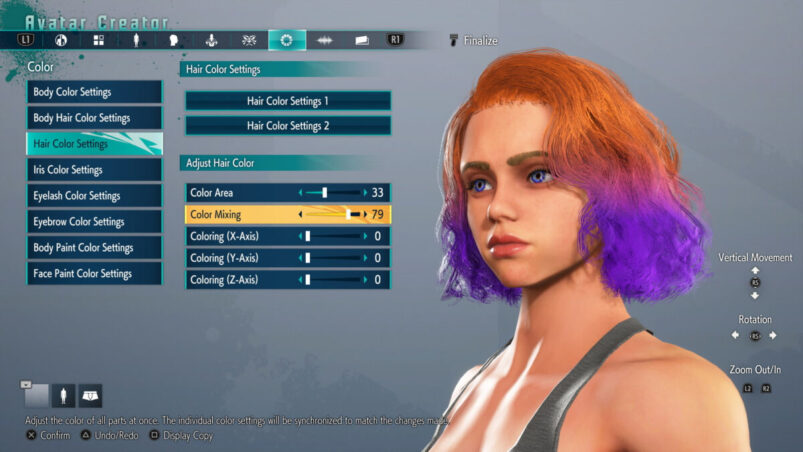
Once you’ve created your avatar, you begin the story mode as a plucky, motivated mixed martial artist sparring in a gym with your coach and first master, Luke: a fighter who was introduced toward the end of Street Fighter V’s life cycle. Your avatar is always fully rendered in each cut scene, wearing whatever clothes and accessories you choose to equip.
Your character is silent during these moments, but Luke and other NPCs are kind enough to remind you of your motivation: the pursuit of the meaning of strength. In a brief tutorial session introducing the game’s modern controls (more on this later), you meet and spar with Bosch, your brooding Shonen anime-like rival. He’s basically supposed to be the Ken to your Ryu, or vice versa.
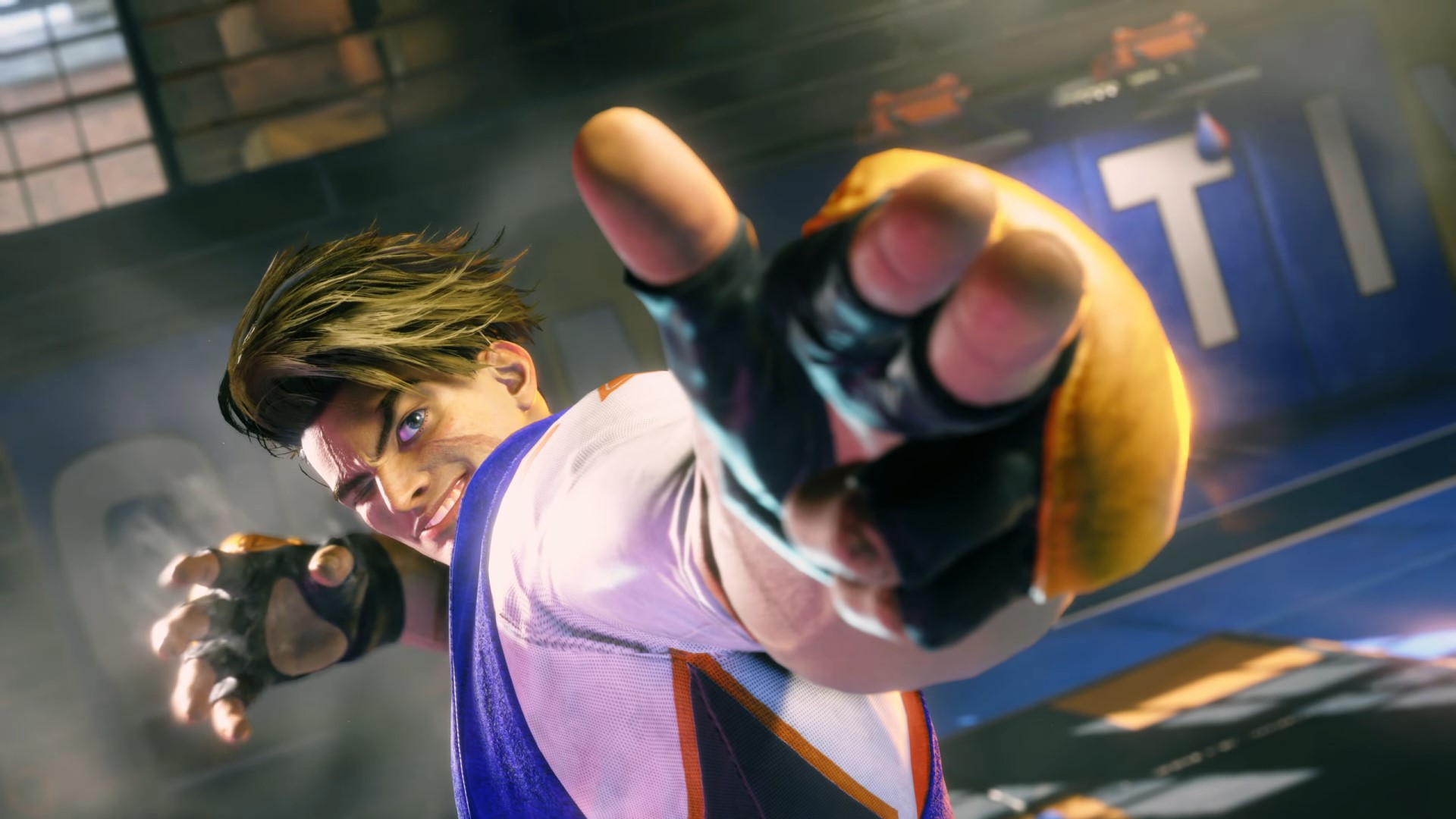
Luke sends you and Bosch off on your first mission in one of the game’s two open worlds (and the game’s primary setting), Metro City—the same Metro City from Capcom’s Final Fight series. You learn that things used to be rough in Metro City when the city was rife with crime and overrun by the sinister Mad Gear Gang.
That is, until Mike Haggar and his bros, Guy and Cody—who have appeared in other Street Fighter games and Capcom series—beat the gang down with some good old-fashioned street justice. Haggar later becomes mayor and cleans up the city. He’s celebrated with a giant golden statue as the best mayor the city has ever had. He’s since retired and handed the reigns over to Cody.
Following the tyrannical rule of the Mad Gear Gang, most of the city’s residents have all taken up various martial arts and means of self-defense. This has created a hilarious, friendly, and competitive city culture where pretty much everyone wants all the smoke and almost anyone can get it. Even the mime and robot refrigerators. Especially the robot refrigerators, which later became my arch-nemesis.
“Pretty much everyone wants all the smoke and almost anyone can get it.”
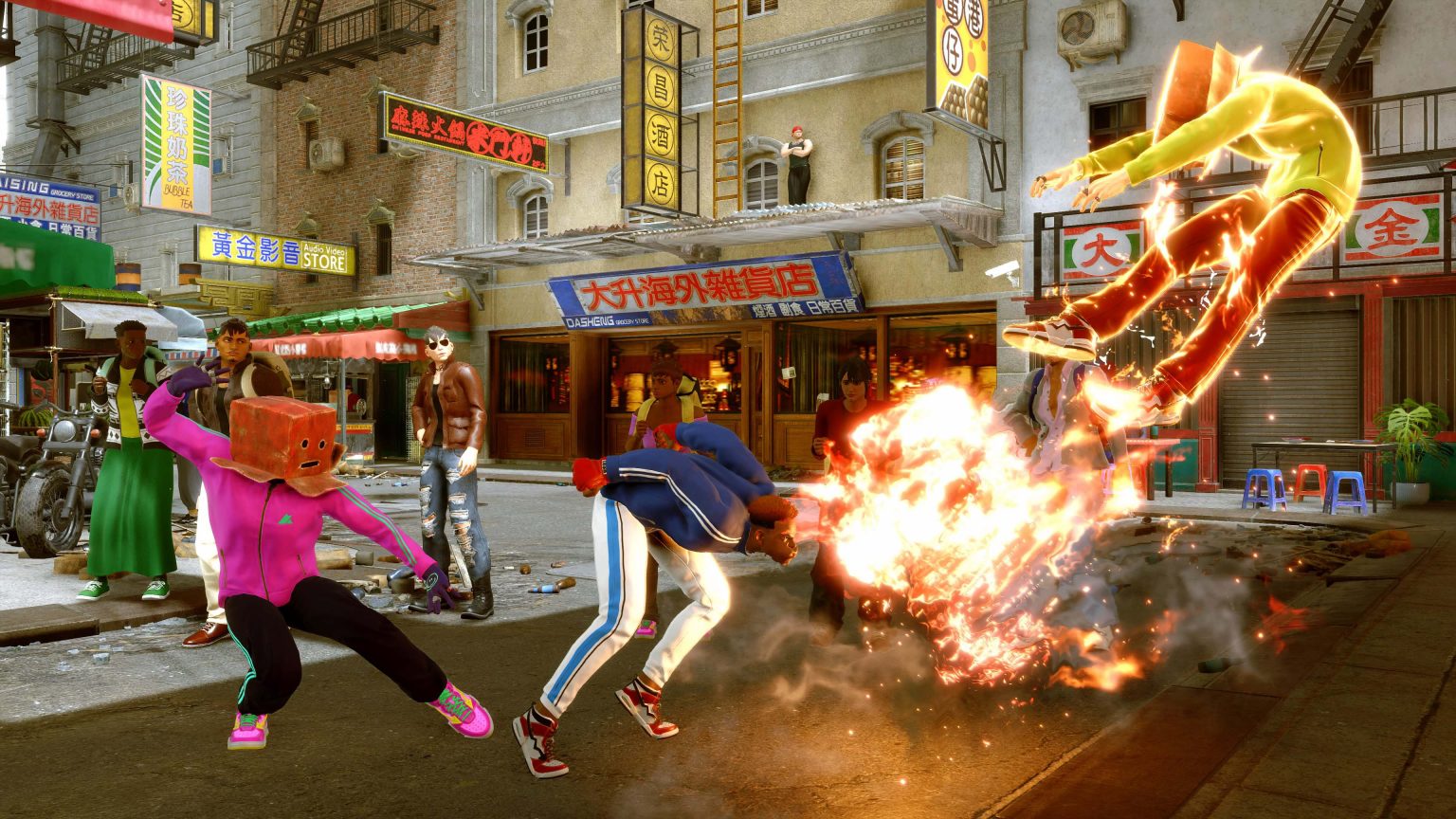
Duking It Out
Throughout Metro City, you’ll run into quirky NPCs who frequently reference the lore of the Street Fighter and Final Fight franchises. You’ll even run into a few of the antagonists from previous Street Fighter titles in some of the side and story mode missions.
Whenever you or an enemy starts a fight, the area you’re fighting in seamlessly transitions into a 2.5D fighting game stage. Bystanders cheer, point and gasp as you duke it out. In some missions, someone will join you to even out the odds, and at other times you’ll be outnumbered by three other enemies at a time with more waiting to jump you. Some stages have environmental hazards to avoid. Unfortunately, during the more populated fights, your character won’t always attack in the direction you want them to.
Soon after you head into the city, you and Bosch go your separate ways. He’s got stuff to do. Serious stuff. It’s at this point in Street Fighter 6 that the world really opens up. As you progress through the story and take on side missions, random street scuffles escalate into full-on gang fights. From there, you get caught up in an international corporate conspiracy run by remnants of Shadowloo, an international crime syndicate and terrorist organization that plagued the world of the Street Fighter series until it was eventually brought down in Street Fighter V.
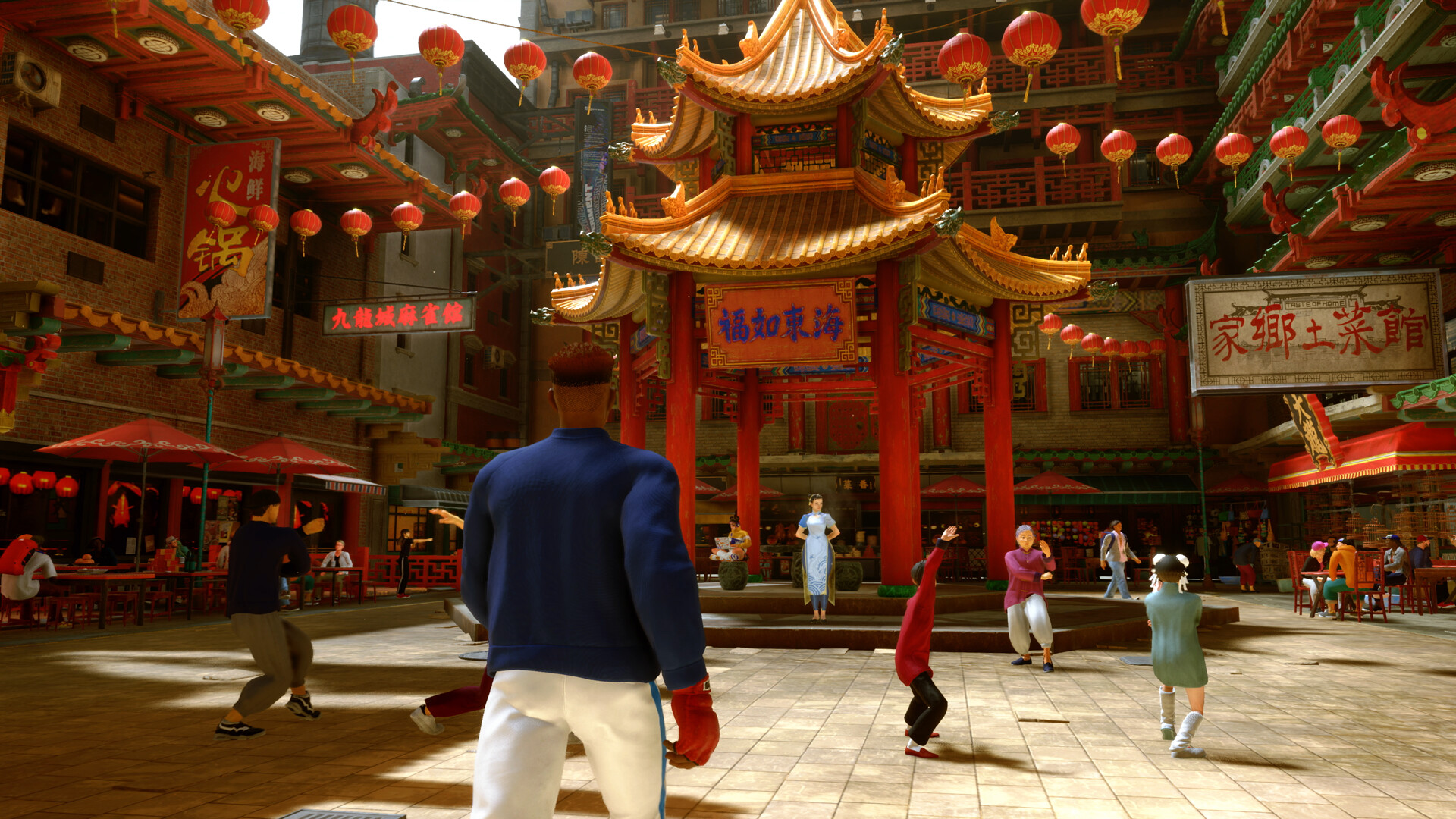
Learning From the Best
As you continue through the story, you’ll interact with the game’s main cast of fighters, who are known as “Masters.” Each Master shares their philosophies on what strength means to them after you convince them to let you study under them. Many of the Masters can be found in Metro City. The game’s other masters are in the game’s second open world (i.e., a world map), often hanging out in their specific stages set in different countries of the world. You reach them using Flight Tickets that you earn in missions and occasionally find while exploring.
Your avatar can pick fights and explore the world using the special moves you learn from the Masters, called Master Actions. These moves can be mapped to your controller’s face buttons and help you access certain areas and receive special items. You can use your spinning bird kick to hover across rooftops or use hadokens to bust crates and barrels. You can break signs and find secret paths hiding extra items and cash.
Each time you meet a Master, you’ll learn special moves, gain new fighting styles, and start building bonds with them. You can only pick one style at a time, but you can give your avatar all of your favorite special moves, no matter which style they use. You strengthen bonds by speaking to Masters, using their fighting styles, fighting people who use other Masters’ styles, and buying them a bunch of gifts. Each fighter can be picky about their bribe.
As your bond grows, Masters will start texting you and telling you more about their interests and backstories. They eventually give you specific missions and offer to join you in your fights. I enjoyed these smaller interactions, as they helped me grow more attached to the fighters I chose to learn from. It’s refreshing to see them chilling and doing things other than pounding each others’ faces in. They also saved me from a lot of frustration during some of the game’s tougher battles.
“It’s refreshing to see [characters] chilling and doing things other than pounding each others’ faces in.”
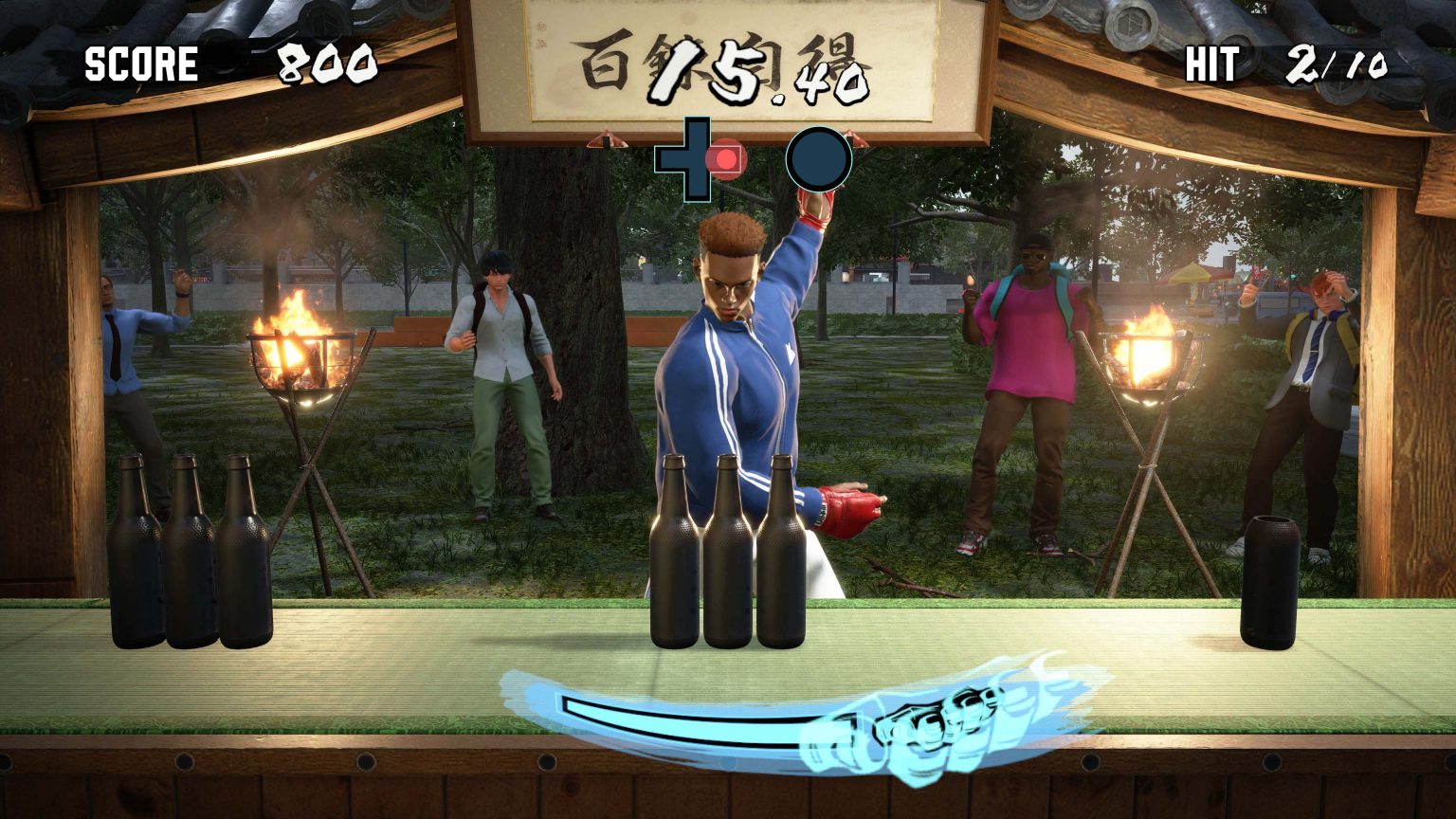
Bumps in the Road
The open-world style is a welcome innovation for the Street Fighter series and fighting game genre as a whole. However, outside of its seamless transition from third-person to 2.5D fighting game combat, it didn’t take long for Street Fighter 6′s World Tour to feel just like every other modern open-world game.
You start off lacking a full health bar and Drive Gauge. These and other core stats can be upgraded through a skill tree. This system is accessed through your smartphone, which also plays the role of your more traditional pause screen. There, you can access apps that let you take photos, check your texts, and change your fighting styles, clothes, and special moves. Additionally, the phone gives you access to items and a map of the world, helps keep track of your mission progress, and lets you adjust the game’s various graphical settings and control schemes. You can even customize your phone with unlockable wallpaper backgrounds.
“It didn’t take long for Street Fighter 6′s World Tour to feel just like every other modern open-world game.”
As you level up, you earn more points that you can allocate to improving stats like vitality, defense, and punch and kick strength. One of the more valuable skills that you eventually unlock makes lower leveled NPCs less likely to chase you around. As you level up, you’ll fight tougher NPCs who go from occasionally throwing out a weak punch or two to suddenly making expert reads every time you press a button, and punishing you with long, hard-hitting combos. They also have a lot more health than you.
I spent a lot of time running around aimlessly before unlocking fast travel points through side missions. I didn’t level up as much as I wanted by only doing the game’s main story missions and a few side missions that unlocked new places to travel. Toward the middle to end of World Tour’s story missions, I spent hours grinding to improve my stats and skills to make some of the later fights less frustrating. Around this time the story missions began feeling repetitive and bloated with empty fetch quests and too many random enemy encounters.

Eventually, I found myself spending a lot of time farming XP through the game’s various part-time jobs. These tasks, which range from fun mini-games to tedious time wasters, were necessary to earn enough money to buy gifts to strengthen the bonds with my Masters. Although I’ve beaten the main story mode, I still have plenty more grinding to do if I want to max out all possible bonds with the Masters.
It helps to remember that this mode isn’t entirely about how good you are at one-on-one fights; it’s an action RPG. You’ll be more likely to survive if you choose your fights wisely. Stock up on restorative items before you fight, only enter fights and tournaments at a similar skill level to your opponents, and strategically upgrade and equip clothes and accessories with properties and stat bonuses that suit your play style.
It took me about 20+ hours to beat the main story mode, but that time can go to 30+ if you decide to max out all bonds, complete all side missions, and max out your stats.
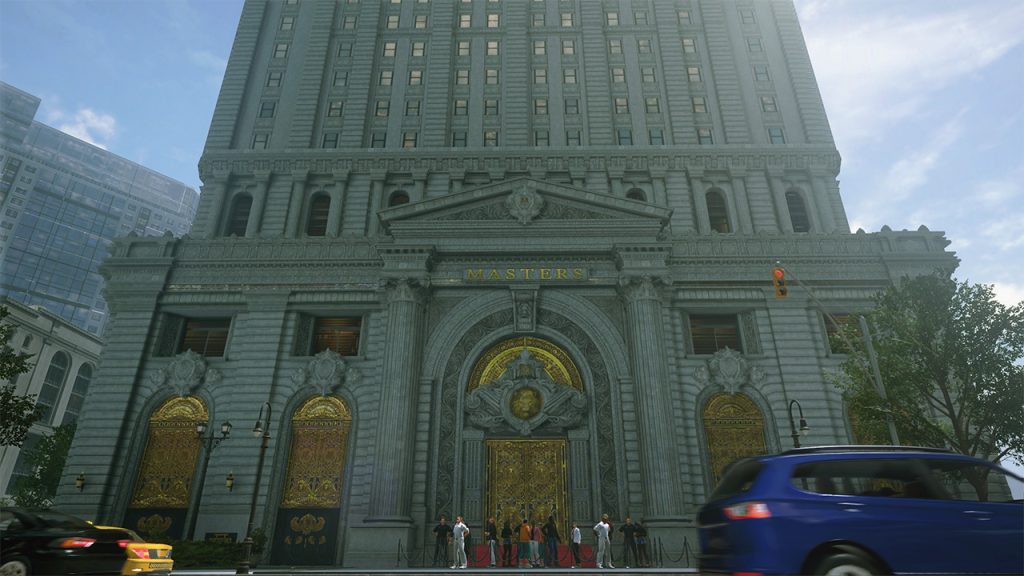
A Living, Breathing World
While I have qualms with Street Fighter 6′s open world, there’s no debating it’s a joy for the eyes and ears. Metro City and the rest of the game’s locations look great in the Resident Evil Engine. The city is bustling with cars and pedestrians. Remixed music from Final Fight echoes through the streets. Neon lights pop out at you and huge advertisements line the buildings while street performers juggle fire. Other parts of the city are more tranquil, such as the maze-like public park.
It’s an upbeat aesthetic. Yet underneath the cheerful veneer lies remnants of the city’s former state of lawlessness. There’s graffiti everywhere, Mad Gear is smaller but still around, and smaller gangs throughout the city’s neighborhoods are trying to make names for themselves. It’s a nuanced world that’s fun to explore, despite the tedium.
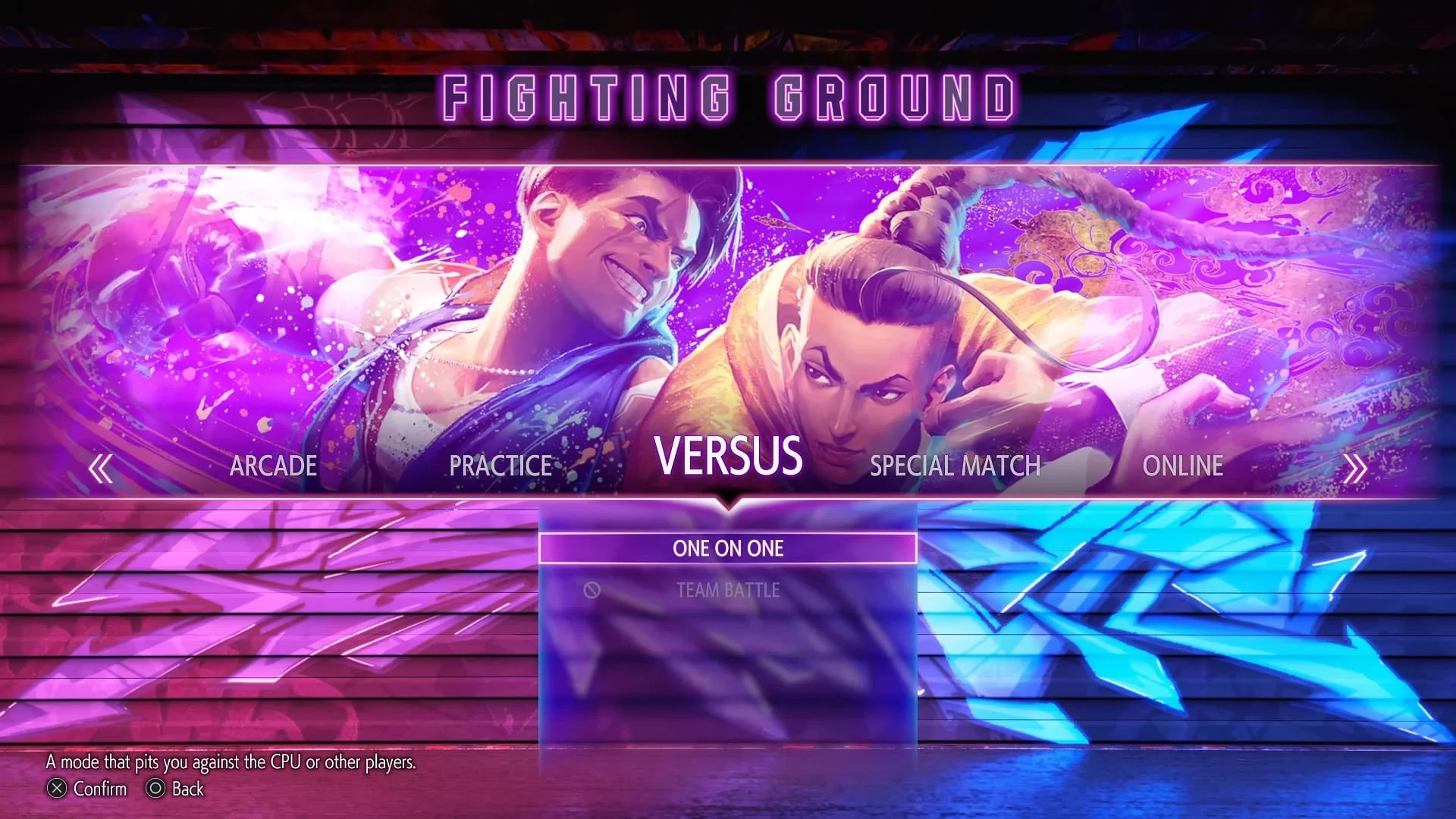
What Else You Got?
But the content doesn’t stop there. Through the Fighting Ground mode, you’ll access the other bulk of Street Fighter 6’s content. This is where you’ll find your traditional arcade mode, which conveys each character’s unique stories and endings through beautiful art and voiceovers. You can adjust the difficulty and number of fights you take on during this mode.
Fighting Ground also contains a training mode, as well as tutorials, character guides, and combo trials. These modes do an excellent job explaining each mechanic that exists in the game, and teach you essential skills and terminology that you can bring over to other 2D fighting games.
In training mode, you can study your character’s frame data and learn the timing for the game’s more difficult combos. The training dummy can be set to any character and record specific actions. This allows you to train for neutral and specific situations, like cross-ups, that may give you a hard time.
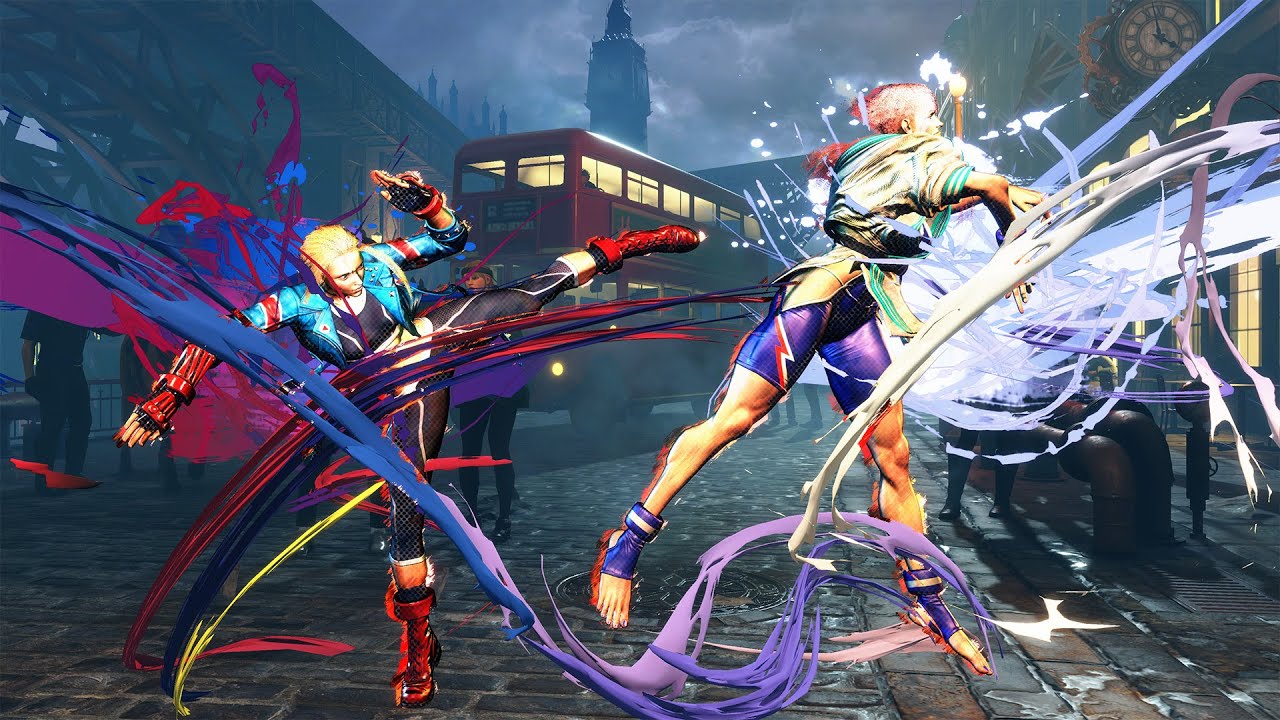
Because of this game’s offensive options, I struggle whenever I’m backed into a corner. In training mode, I practiced dealing with the various forms of pressure mind games that have cost me many matches. The tutorial mode is extensive and covers the basic, intermediate, and advanced aspects of the core gameplay.
Combo trials offer a decent number of combos to help you get started with your character. But if you want more advanced stuff, you’ll probably have to check character guides on YouTube.
I’m happy to see how fighting game tutorials have improved over the years, and Street Fighter 6 offers a solid amount of assistance with learning the game. With these resources, if you’re willing to put in the time and effort, you’ll learn just about everything you need to know to start those winning streaks.
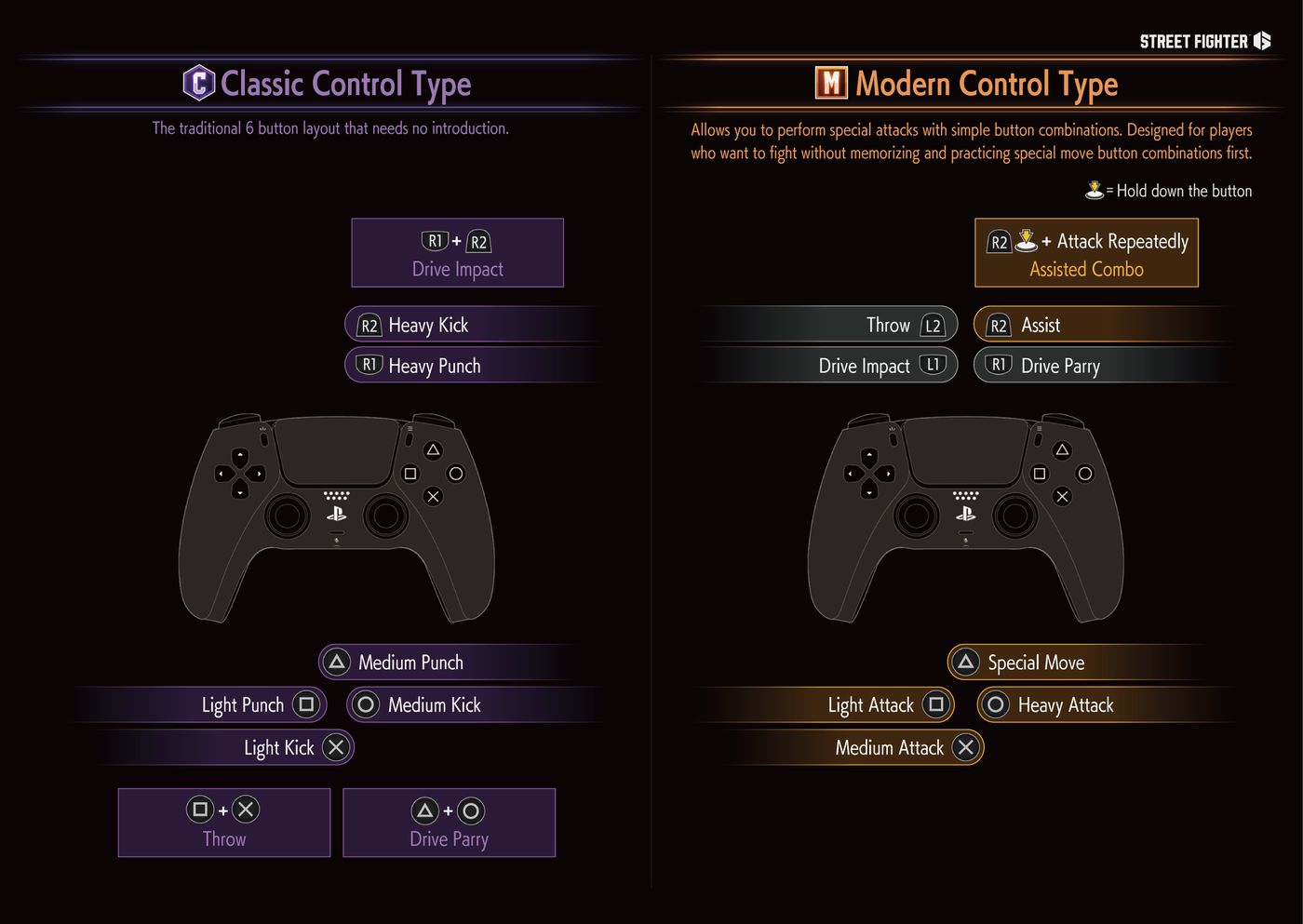
A Modern Take
There’s been a lot of talk about Street Fighter 6′s “modern” control mode in the fighting game community, with some saying it makes the game too easy, and others saying it’s great for newcomers. Fighting games—and the fighting game community at large—can be intimidating, cruel, and punishing when you’re first starting out.
From my experiences, modern mode lets newcomers put up more of a fight while not necessarily making things too easy for experts. The mode is reminiscent of auto-combo mechanics present in anime fighting games. Depending on the character, modern mode may limit some of your character’s standard and unique attacks.
You may find that you enjoy using modern mode for some characters and classic mode for others. For example, modern mode can be especially beneficial for characters like Manon and Zangief whose gameplay revolves around command grabs.
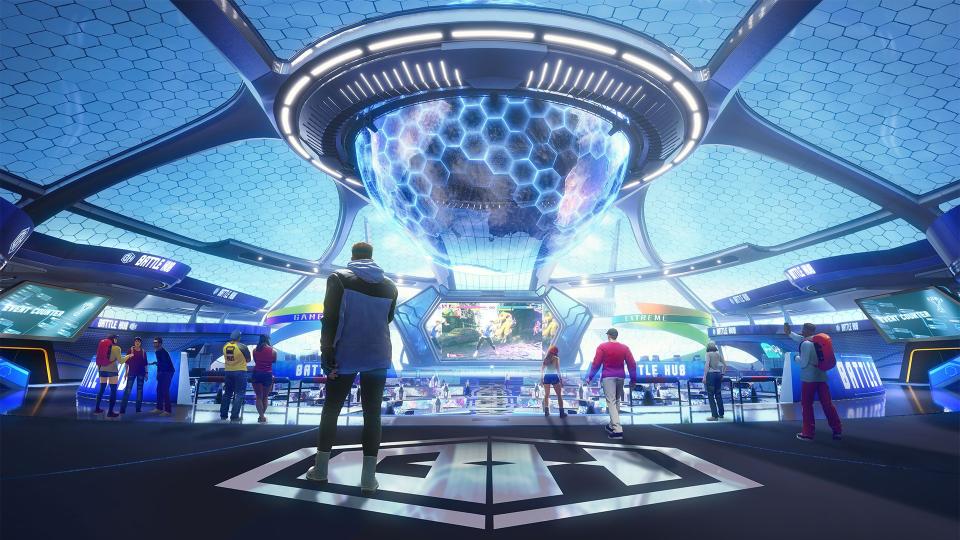
Online Warrior
Battle Hub serves as the game’s third major gaming mode, which is focused on the game’s online components. In Battle Hub, you’re free to run around and interact with other avatars in a virtual arcade setup, similar to Arc System Works’ most recent fighting games.
After selecting your server, you enter the Battle Hub free to spectate, chat with other players, challenge them to ranked and casual matches, and play emulated Capcom arcade classics from the Final Fight, Mega Man, and Street Fighter series. Your avatar navigates the space using the same controls from World Tour mode.
Vendors offer you premium items for your avatar, while fights play on a big screen in the background. Tournaments are also held in these hubs. I’ve enjoyed spending time there, especially when I’m longing for that long-lost arcade vibe or want to feel like I’m at a fighting game tournament.
In the middle of the arcade, you can challenge other avatars to avatar fights where you can use the special moves and supers you pick for your customized character. If you prefer playing Street Fighter 6 with a fight stick, hitbox, or other types of controllers, you can use them and navigate the world with a pad at the same time.
You could also skip the Battle Hub entirely and access the game’s online modes through Fighting Ground, where you can set up ranked and casual matchmaking while you train or play through the arcade story modes. Most of the time, I stayed out of the battle hub and relied on matchmaking this way and through directly connecting with friends through the Capcom Fighters Network, which is what enables cross-platform play.
The menu through this mode can be a little tough to navigate at first. It took me a moment to figure out how to add friends and join their games. Hopefully, Capcom streamlines this process a bit more in the future.
When you begin playing ranked mode for the first time, you can select your experience level with fighting games. Then, after a small series of matches, the game ranks you based on your wins and losses. From there, it’s up to you to climb your way to the top of the ranks. Each character you use must climb through their ranking system. Matches are “best two out of three” format, then you’re passed off to a different opponent.
The servers for private lobbies were down the day Street Fighter 6 was released, but Capcom quickly resolved the issue the next day. In casual mode, you can invite up to 16 people to a private lobby.
I played dozens of casual matches with a few friends and didn’t run into many issues with online play. Whether I was playing wirelessly or wired, I had a stable connection with my opponents most of the time. The game’s net code is excellent, and even in the moments where things start to stutter, it didn’t last long at all.
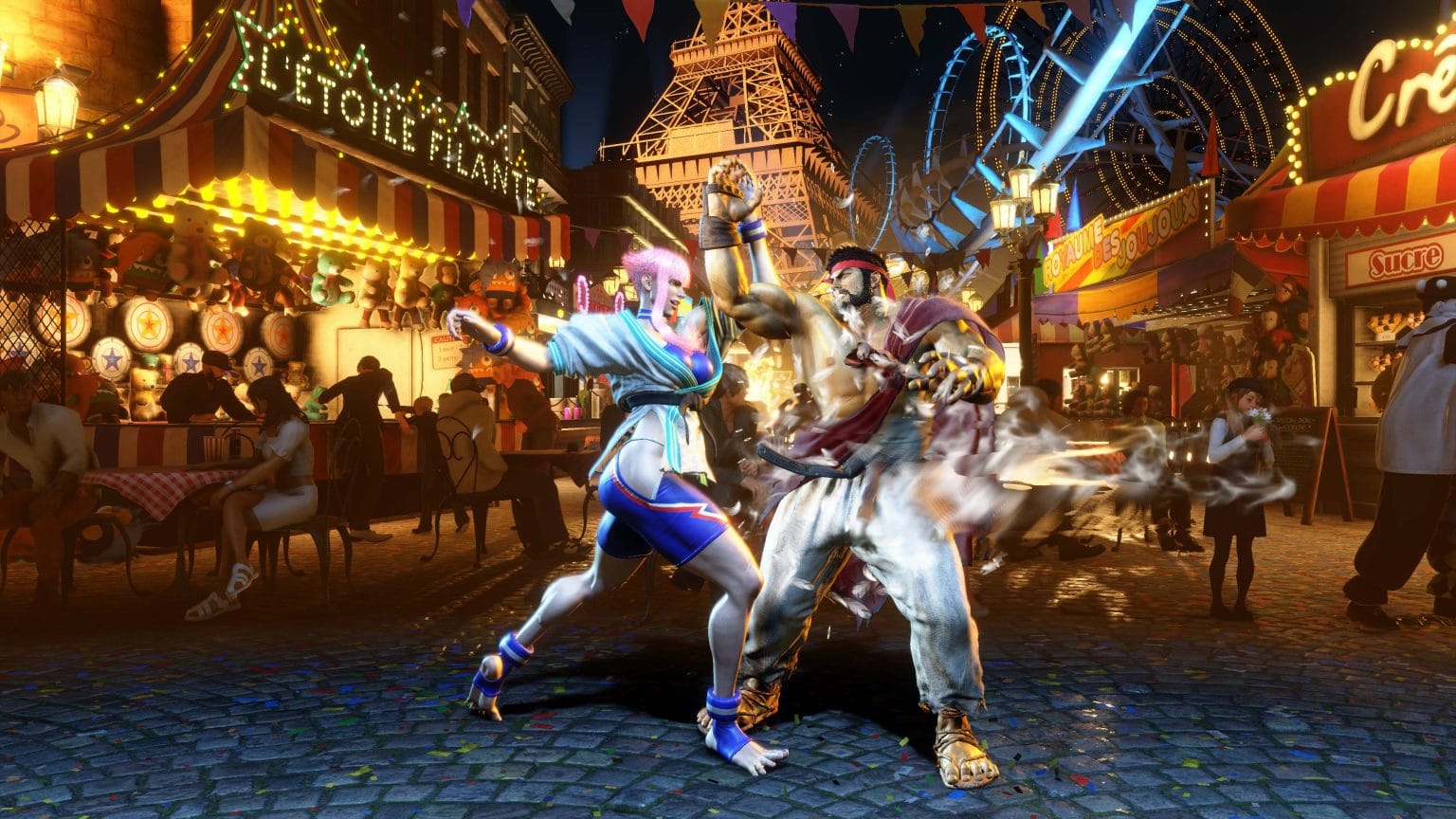
Street Fighter 6′s New Characters
When it comes to the newer fighters, I found Manon and Marissa to be particularly interesting. Manon’s move animations are so graceful and flow so easily together she has some powerful command grabs. Marissa is a powerhouse with chargeable heavy attacks and hard-hitting specials that can break through Drive Impacts and other armored moves.
I have no interest in Luke as Capcom’s new flagship character. He’s another cocky blonde white male character in a game series that already has so many. He represents more of a modern MMA-style brawler with none of the flair. His specials are as bland as his design and back story. But he’s easy to pick up and learn the game with.
I absolutely adore Kimberly. I was a fan of Guy in Street Fighter IV and I’m glad his target combos from that game (and Street Fighter Alpha before it) are back and expanded. She’s definitely Guy’s protégée, but she comes with a few unique tricks of her own.
But with Street Fighter games, I tend to gravitate towards charge characters and characters that use boxing or Muay Thai as their primary fighting style.
Since there aren’t any boxers or Muay Thai fighters on the roster yet, I spend most of my time playing Guile for his solid normals and projectile game. Currently, I’m ranked Gold with Guile, but I’m thinking of learning Marisa next.
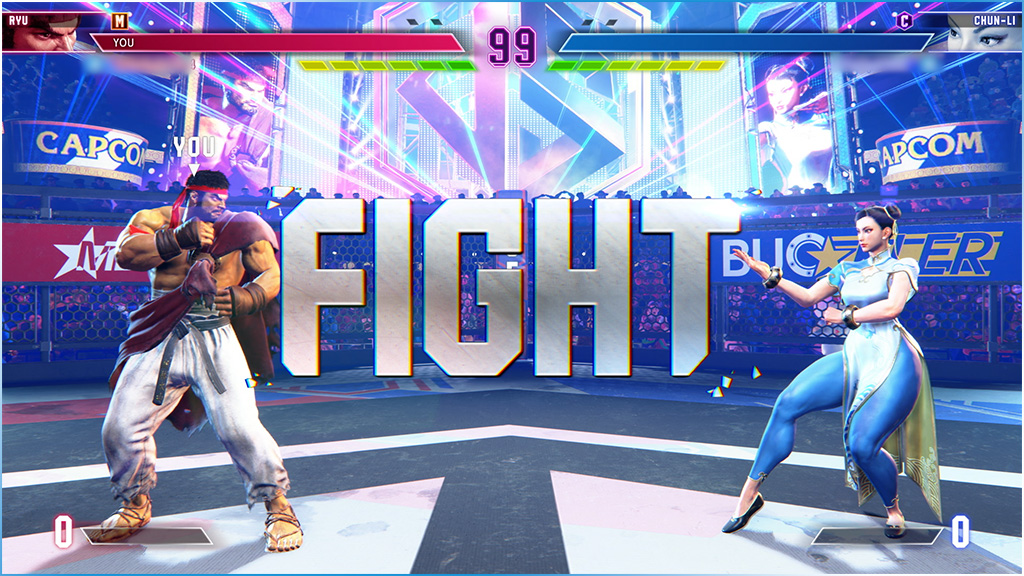
Final Thoughts
Street Fighter 6 reignited the competitive spirit I lost with Street Fighter V. I love the Drive system, even though I have a bad habit of using up all my gauges early on. The story mode, even with its flaws and depressing ending, was ultimately refreshing, especially within the fighting game genre. Before this game, I resigned myself to convoluted fighting game stories told through cut scenes, visual novels, or arcade modes. Not anymore.
I’m not a fan of the game’s microtransaction systems. The different launch editions don’t offer much of SF6′s in-game currency, and the new characters and stages are a long way off. While I purchased the Ultimate Edition, I recommend sticking with the base version and picking up Capcom’s character pass in the future.
Street Fighter 6 introduces a versatile fighting game system that brilliantly refines mechanics introduced in previous iterations. With its innovative story mode and modern control options, it stands out from its predecessors as the most accessible Street Fighter game ever made. Add in its unique style and solid online gameplay options, and Street Fighter 6 shines bright for the series while setting the bar high for future fighting games.
Score: 9.3/10
Donovan is a lifelong gamer with a love for fast-paced, single-player action games—especially Devil May Cry, Metroidvanias, indies, and action RPGs. He’s also an “advanced scrub” at fighting games and will play just about anything fun. Donovan is passionate about seeing more diverse characters and creators in the industry—or at least better hair options for Black people. With over a decade in journalism, he joined The Punished Backlog in 2023 to write more about what he loves. Follow him on Twitter and Instagram @dono_harrell.









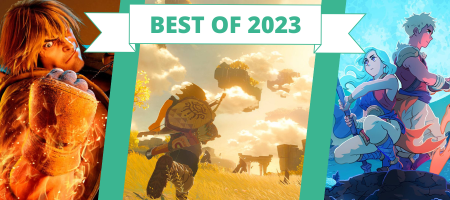
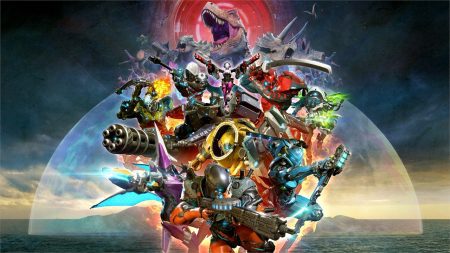
1 Comment
“I have no interest in Luke as Capcom’s new flagship character. He’s another cocky blonde white male character in a game series that already has so many.”
“…I spend most of my time playing Guile for his solid normals and projectile game. Currently, I’m ranked Gold with Guile…”
Ah, the duality of Man.